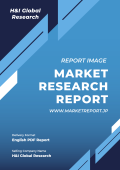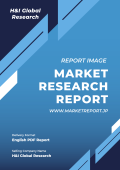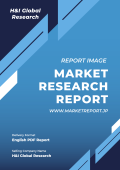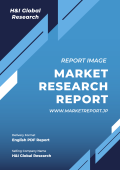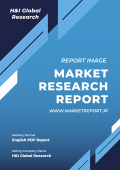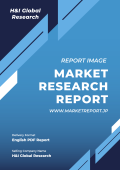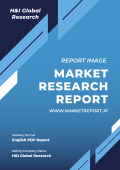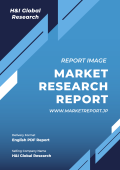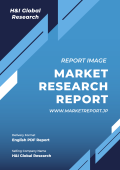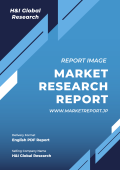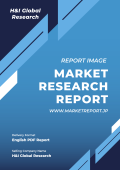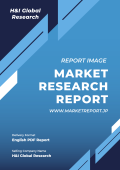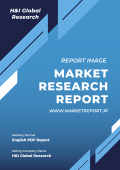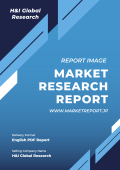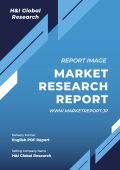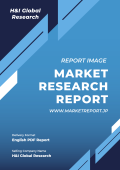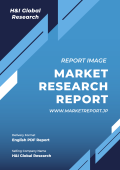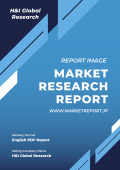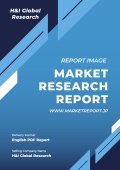| ■ 英語タイトル:Pressure Transmitter Market: Global Industry Trends, Share, Size, Growth, Opportunity and Forecast 2023-2028
|
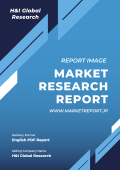 | ■ 発行会社/調査会社:IMARC
■ 商品コード:IMARC23JLY220
■ 発行日:2023年7月
■ 調査対象地域:グローバル
■ 産業分野:重工業
■ ページ数:137
■ レポート言語:英語
■ レポート形式:PDF
■ 納品方式:Eメール
|
■ 販売価格オプション
(消費税別)
※販売価格オプションの説明はこちらで、ご購入に関する詳細案内はご利用ガイドでご確認いただけます。
※お支払金額は「換算金額(日本円)+消費税+配送料(Eメール納品は無料)」です。
※Eメールによる納品の場合、通常ご注文当日~2日以内に納品致します。
※レポート納品後、納品日+5日以内に請求書を発行・送付致します。(請求書発行日より2ヶ月以内の銀行振込条件、カード払いも可能)
※IMARC社の概要及び新刊レポートはこちらでご確認いただけます。
*** レポート概要(サマリー)***IMARC社は、2022年31億ドルであった世界の圧力トランスミッタ市場規模が、予測期間中(2023年~2028年)年平均2.3%成長し、2028年には38億ドルに達すると予測しています。当調査資料では、圧力トランスミッタの世界市場を調査・分析し、序論、範囲・調査手法、エグゼクティブサマリー、イントロダクション、種類別(絶対圧トランスミッタ、ゲージ圧力トランスミッタ、差圧トランスミッタ、多変量圧力トランスミッタ)分析、センシング技術別(ストレインゲージ、静電容量式、圧電、その他)分析、流体タイプ別(液体、蒸気、ガス)分析、用途別(フロー、レベル、圧力)分析、地域別(アジア太平洋、北米、ヨーロッパ、中南米、中東/アフリカ)分析、SWOT分析、バリューチェーン分析、ファイブフォース分析、価格分析、競争状況などの項目を掲載しています。なお、当市場の主要企業には、ABB Ltd.、Dwyer Instruments Inc.、Emerson Electric Co.、Endress+Hauser Consult AG、General Electric Co.、Honeywell International Inc.、Sensata Technologies Inc.、SensorONE Ltd.、Siemens AG and Yokogawa Electric Corporationなどが含まれています。
・序論
・範囲・調査手法
・エグゼクティブサマリー
・イントロダクション
・世界の圧力トランスミッタ市場規模:種類別
- 絶対圧トランスミッタの市場規模
- ゲージ圧力トランスミッタの市場規模
- 差圧トランスミッタの市場規模
- 多変量圧力トランスミッタの市場規模
・世界の圧力トランスミッタ市場規模:センシング技術別
- ストレインゲージセンシング技術の市場規模
- 静電容量式センシング技術の市場規模
- 圧電センシング技術の市場規模
- その他センシング技術の市場規模
・世界の圧力トランスミッタ市場規模:流体タイプ別
- 液体の市場規模
- 蒸気の市場規模
- ガスの市場規模
・世界の圧力トランスミッタ市場規模:用途別
- フロー用圧力トランスミッタの市場規模
- レベル用圧力トランスミッタの市場規模
- 圧力用圧力トランスミッタの市場規模
・世界の圧力トランスミッタ市場規模:地域別
- アジア太平洋の圧力トランスミッタ市場規模
- 北米の圧力トランスミッタ市場規模
- ヨーロッパの圧力トランスミッタ市場規模
- 中南米の圧力トランスミッタ市場規模
- 中東/アフリカの圧力トランスミッタ市場規模
・SWOT分析
・バリューチェーン分析
・ファイブフォース分析
・価格分析
・競争状況 |
Market Overview:
The global pressure transmitter market size reached US$ 3.1 Billion in 2022. Looking forward, IMARC Group expects the market to reach US$ 3.8 Billion by 2028, exhibiting a growth rate (CAGR) of 2.3% during 2023-2028.
A pressure transmitter is a sensor that regulates the compression applied over a liquid, fluid or gas. The device measures rapid changes in pressure, which are converted into mechanical energy and electric current. It also consists of an electronic amplifier and a pressure transducer to accurately transmit the current. These transmitters are commonly used in combination with other devices to measure depth, water flow, altitude and pressure loss to prevent any leakages in the industrial equipments. They are immune to radiation and electromagnetic fields, owing to which, they find extensive applications across various industry sectors such as chemical, oil and gas, power generation, food & beverages, metals & mining, etc.
The emerging trend of automation for industrial optimization is one of the key factors driving the growth of the market. The integration of digital communication interfaces, which offer remote calibration and diagnostics, is rapidly replacing traditionally used analog pressure transmitters. Besides being increasingly utilized in industrial machinery, these transmitters also find extensive application in consumer electronics for indoor navigation and creating an overall user-friendly interface, among other purposes. Additionally, the continuously rising healthcare sector is also favoring the market growth. Pressure transmitters are used to transmit blood pressure information from the catheter to the patient’s monitoring system. Also, steam sterilizers used in hospitals utilize these transmitters to regulate the quality of steam produced by maintaining the pressure inside the sterilization chamber. Other factors, such as increasing investments in the energy industry, coupled with the enhanced adoption of technologically advanced variants for reducing human errors, are projected to drive the market in the upcoming years.
IMARC Group’s latest report provides a deep insight into the global pressure transmitter market covering all its essential aspects. This ranges from macro overview of the market to micro details of the industry performance, recent trends, key market drivers and challenges, SWOT analysis, Porter’s five forces analysis, value chain analysis, etc. This report is a must-read for industry players, investors, researchers, consultants, business strategists, and all those who have any kind of stake or are planning to foray into the pressure transmitter market in any manner.
Key Market Segmentation:
IMARC Group provides an analysis of the key trends in each sub-segment of the global pressure transmitter market report, along with forecasts at the global, regional and country level from 2023-2028. Our report has categorized the market based on type, sensing technology, fluid type, application and end-use industry.
Breakup by Type:
Absolute Pressure Transmitters
Gauge Pressure Transmitters
Differential Pressure Transmitters
Multivariable Pressure Transmitters
Breakup by Sensing Technology:
Strain Gauge
Capacitive
Piezoelectric
Others
Breakup by Fluid Type:
Liquid
Steam
Gas
Breakup by Application:
Flow
Level
Pressure
Breakup by End-Use Industry:
Oil & Gas
Power Generation
Water & Wastewater
Food & Beverages
Chemicals
Metals & Mining
Pulp & Paper
Pharmaceuticals
Others
Breakup by Region:
Asia Pacific
China
Japan
India
South Korea
Australia
Indonesia
Others
North America
United States
Canada
Europe
Germany
France
United Kingdom
Italy
Spain
Russia
Others
Latin America
Brazil
Mexico
Argentina
Colombia
Chile
Peru
Others
Middle East and Africa
Turkey
Saudi Arabia
Iran
United Arab Emirates
Others
Competitive Landscape:
The competitive landscape of the industry has also been examined with some of the key players being ABB Ltd., Dwyer Instruments Inc., Emerson Electric Co., Endress+Hauser Consult AG, General Electric Co., Honeywell International Inc., Sensata Technologies Inc., SensorONE Ltd., Siemens AG, Yokogawa Electric Corporation, etc.
Key Questions Answered in This Report
1. What was the global pressure transmitter market size in 2022?2. What will be the global pressure transmitter market outlook during the forecast period 2023-2028?
3. What are the global pressure transmitter market drivers?
4. What are the major trends in the global pressure transmitter market?
5. What is the impact of COVID-19 on the global pressure transmitter market?
6. What is the global pressure transmitter market breakup by type?
7. What is the global pressure transmitter market breakup by sensing technology?
8. What is the global pressure transmitter market breakup by fluid type?
9. What is the global pressure transmitter market breakup by application?
10. What is the global pressure transmitter market breakup by end use industry?
11. What are the major regions in the global pressure transmitter market?
Market Overview:
The global pressure transmitter market size reached US$ 3.1 Billion in 2022. Looking forward, IMARC Group expects the market to reach US$ 3.8 Billion by 2028, exhibiting a growth rate (CAGR) of 2.3% during 2023-2028.
A pressure transmitter is a sensor that regulates the compression applied over a liquid, fluid or gas. The device measures rapid changes in pressure, which are converted into mechanical energy and electric current. It also consists of an electronic amplifier and a pressure transducer to accurately transmit the current. These transmitters are commonly used in combination with other devices to measure depth, water flow, altitude and pressure loss to prevent any leakages in the industrial equipments. They are immune to radiation and electromagnetic fields, owing to which, they find extensive applications across various industry sectors such as chemical, oil and gas, power generation, food & beverages, metals & mining, etc.
The emerging trend of automation for industrial optimization is one of the key factors driving the growth of the market. The integration of digital communication interfaces, which offer remote calibration and diagnostics, is rapidly replacing traditionally used analog pressure transmitters. Besides being increasingly utilized in industrial machinery, these transmitters also find extensive application in consumer electronics for indoor navigation and creating an overall user-friendly interface, among other purposes. Additionally, the continuously rising healthcare sector is also favoring the market growth. Pressure transmitters are used to transmit blood pressure information from the catheter to the patient’s monitoring system. Also, steam sterilizers used in hospitals utilize these transmitters to regulate the quality of steam produced by maintaining the pressure inside the sterilization chamber. Other factors, such as increasing investments in the energy industry, coupled with the enhanced adoption of technologically advanced variants for reducing human errors, are projected to drive the market in the upcoming years.
IMARC Group’s latest report provides a deep insight into the global pressure transmitter market covering all its essential aspects. This ranges from macro overview of the market to micro details of the industry performance, recent trends, key market drivers and challenges, SWOT analysis, Porter’s five forces analysis, value chain analysis, etc. This report is a must-read for industry players, investors, researchers, consultants, business strategists, and all those who have any kind of stake or are planning to foray into the pressure transmitter market in any manner.
Key Market Segmentation:
IMARC Group provides an analysis of the key trends in each sub-segment of the global pressure transmitter market report, along with forecasts at the global, regional and country level from 2023-2028. Our report has categorized the market based on type, sensing technology, fluid type, application and end-use industry.
Breakup by Type:
Absolute Pressure Transmitters
Gauge Pressure Transmitters
Differential Pressure Transmitters
Multivariable Pressure Transmitters
Breakup by Sensing Technology:
Strain Gauge
Capacitive
Piezoelectric
Others
Breakup by Fluid Type:
Liquid
Steam
Gas
Breakup by Application:
Flow
Level
Pressure
Breakup by End-Use Industry:
Oil & Gas
Power Generation
Water & Wastewater
Food & Beverages
Chemicals
Metals & Mining
Pulp & Paper
Pharmaceuticals
Others
Breakup by Region:
Asia Pacific
China
Japan
India
South Korea
Australia
Indonesia
Others
North America
United States
Canada
Europe
Germany
France
United Kingdom
Italy
Spain
Russia
Others
Latin America
Brazil
Mexico
Argentina
Colombia
Chile
Peru
Others
Middle East and Africa
Turkey
Saudi Arabia
Iran
United Arab Emirates
Others
Competitive Landscape:
The competitive landscape of the industry has also been examined with some of the key players being ABB Ltd., Dwyer Instruments Inc., Emerson Electric Co., Endress+Hauser Consult AG, General Electric Co., Honeywell International Inc., Sensata Technologies Inc., SensorONE Ltd., Siemens AG, Yokogawa Electric Corporation, etc.
Key Questions Answered in This Report
1. What was the global pressure transmitter market size in 2022?2. What will be the global pressure transmitter market outlook during the forecast period 2023-2028?
3. What are the global pressure transmitter market drivers?
4. What are the major trends in the global pressure transmitter market?
5. What is the impact of COVID-19 on the global pressure transmitter market?
6. What is the global pressure transmitter market breakup by type?
7. What is the global pressure transmitter market breakup by sensing technology?
8. What is the global pressure transmitter market breakup by fluid type?
9. What is the global pressure transmitter market breakup by application?
10. What is the global pressure transmitter market breakup by end use industry?
11. What are the major regions in the global pressure transmitter market?
Figure 1: Global: Pressure Transmitter Market: Major Drivers and Challenges
Figure 2: Global: Pressure Transmitter Market: Sales Value (in Billion US$), 2017-2022
Figure 3: Global: Pressure Transmitter Market: Breakup by Type (in %), 2022
Figure 4: Global: Pressure Transmitter Market: Breakup by Sensing Technology (in %), 2022
Figure 5: Global: Pressure Transmitter Market: Breakup by Fluid Type (in %), 2022
Figure 6: Global: Pressure Transmitter Market: Breakup by Application (in %), 2022
Figure 7: Global: Pressure Transmitter Market: Breakup by End-Use Industry (in %), 2022
Figure 8: Global: Pressure Transmitter Market: Breakup by Region (in %), 2022
Figure 9: Global: Pressure Transmitter Market Forecast: Sales Value (in Billion US$), 2023-2028
Figure 10: Global: Pressure Transmitter (Absolute Pressure Transmitters) Market: Sales Value (in Million US$), 2017 & 2022
Figure 11: Global: Pressure Transmitter (Absolute Pressure Transmitters) Market Forecast: Sales Value (in Million US$), 2023-2028
Figure 12: Global: Pressure Transmitter (Gauge Pressure Transmitters) Market: Sales Value (in Million US$), 2017 & 2022
Figure 13: Global: Pressure Transmitter (Gauge Pressure Transmitters) Market Forecast: Sales Value (in Million US$), 2023-2028
Figure 14: Global: Pressure Transmitter (Differential Pressure Transmitters) Market: Sales Value (in Million US$), 2017 & 2022
Figure 15: Global: Pressure Transmitter (Differential Pressure Transmitters) Market Forecast: Sales Value (in Million US$), 2023-2028
Figure 16: Global: Pressure Transmitter (Multivariable Pressure Transmitters) Market: Sales Value (in Million US$), 2017 & 2022
Figure 17: Global: Pressure Transmitter (Multivariable Pressure Transmitters) Market Forecast: Sales Value (in Million US$), 2023-2028
Figure 18: Global: Pressure Transmitter (Strain Gauge) Market: Sales Value (in Million US$), 2017 & 2022
Figure 19: Global: Pressure Transmitter (Strain Gauge) Market Forecast: Sales Value (in Million US$), 2023-2028
Figure 20: Global: Pressure Transmitter (Capacitive) Market: Sales Value (in Million US$), 2017 & 2022
Figure 21: Global: Pressure Transmitter (Capacitive) Market Forecast: Sales Value (in Million US$), 2023-2028
Figure 22: Global: Pressure Transmitter (Piezoelectric) Market: Sales Value (in Million US$), 2017 & 2022
Figure 23: Global: Pressure Transmitter (Piezoelectric) Market Forecast: Sales Value (in Million US$), 2023-2028
Figure 24: Global: Pressure Transmitter (Other Sensing Technologies) Market: Sales Value (in Million US$), 2017 & 2022
Figure 25: Global: Pressure Transmitter (Other Sensing Technologies) Market Forecast: Sales Value (in Million US$), 2023-2028
Figure 26: Global: Pressure Transmitter (Liquid) Market: Sales Value (in Million US$), 2017 & 2022
Figure 27: Global: Pressure Transmitter (Liquid) Market Forecast: Sales Value (in Million US$), 2023-2028
Figure 28: Global: Pressure Transmitter (Steam) Market: Sales Value (in Million US$), 2017 & 2022
Figure 29: Global: Pressure Transmitter (Steam) Market Forecast: Sales Value (in Million US$), 2023-2028
Figure 30: Global: Pressure Transmitter (Gas) Market: Sales Value (in Million US$), 2017 & 2022
Figure 31: Global: Pressure Transmitter (Gas) Market Forecast: Sales Value (in Million US$), 2023-2028
Figure 32: Global: Pressure Transmitter (Flow) Market: Sales Value (in Million US$), 2017 & 2022
Figure 33: Global: Pressure Transmitter (Flow) Market Forecast: Sales Value (in Million US$), 2023-2028
Figure 34: Global: Pressure Transmitter (Level) Market: Sales Value (in Million US$), 2017 & 2022
Figure 35: Global: Pressure Transmitter (Level) Market Forecast: Sales Value (in Million US$), 2023-2028
Figure 36: Global: Pressure Transmitter (Pressure) Market: Sales Value (in Million US$), 2017 & 2022
Figure 37: Global: Pressure Transmitter (Pressure) Market Forecast: Sales Value (in Million US$), 2023-2028
Figure 38: Global: Pressure Transmitter (Oil & Gas) Market: Sales Value (in Million US$), 2017 & 2022
Figure 39: Global: Pressure Transmitter (Oil & Gas) Market Forecast: Sales Value (in Million US$), 2023-2028
Figure 40: Global: Pressure Transmitter (Power Generation) Market: Sales Value (in Million US$), 2017 & 2022
Figure 41: Global: Pressure Transmitter (Power Generation) Market Forecast: Sales Value (in Million US$), 2023-2028
Figure 42: Global: Pressure Transmitter (Water & Wastewater) Market: Sales Value (in Million US$), 2017 & 2022
Figure 43: Global: Pressure Transmitter (Water & Wastewater) Market Forecast: Sales Value (in Million US$), 2023-2028
Figure 44: Global: Pressure Transmitter (Food & Beverages) Market: Sales Value (in Million US$), 2017 & 2022
Figure 45: Global: Pressure Transmitter (Food & Beverages) Market Forecast: Sales Value (in Million US$), 2023-2028
Figure 46: Global: Pressure Transmitter (Chemicals) Market: Sales Value (in Million US$), 2017 & 2022
Figure 47: Global: Pressure Transmitter (Chemicals) Market Forecast: Sales Value (in Million US$), 2023-2028
Figure 48: Global: Pressure Transmitter (Metals & Mining) Market: Sales Value (in Million US$), 2017 & 2022
Figure 49: Global: Pressure Transmitter (Metals & Mining) Market Forecast: Sales Value (in Million US$), 2023-2028
Figure 50: Global: Pressure Transmitter (Pulp & Paper) Market: Sales Value (in Million US$), 2017 & 2022
Figure 51: Global: Pressure Transmitter (Pulp & Paper) Market Forecast: Sales Value (in Million US$), 2023-2028
Figure 52: Global: Pressure Transmitter (Pharmaceuticals) Market: Sales Value (in Million US$), 2017 & 2022
Figure 53: Global: Pressure Transmitter (Pharmaceuticals) Market Forecast: Sales Value (in Million US$), 2023-2028
Figure 54: Global: Pressure Transmitter (Others) Market: Sales Value (in Million US$), 2017 & 2022
Figure 55: Global: Pressure Transmitter (Others) Market Forecast: Sales Value (in Million US$), 2023-2028
Figure 56: Asia Pacific: Pressure Transmitter Market: Sales Value (in Million US$), 2017 & 2022
Figure 57: Asia Pacific: Pressure Transmitter Market Forecast: Sales Value (in Million US$), 2023-2028
Figure 58: China: Pressure Transmitter Market: Sales Value (in Million US$), 2017 & 2022
Figure 59: China: Pressure Transmitter Market Forecast: Sales Value (in Million US$), 2023-2028
Figure 60: Japan: Pressure Transmitter Market: Sales Value (in Million US$), 2017 & 2022
Figure 61: Japan: Pressure Transmitter Market Forecast: Sales Value (in Million US$), 2023-2028
Figure 62: India: Pressure Transmitter Market: Sales Value (in Million US$), 2017 & 2022
Figure 63: India: Pressure Transmitter Market Forecast: Sales Value (in Million US$), 2023-2028
Figure 64: South Korea: Pressure Transmitter Market: Sales Value (in Million US$), 2017 & 2022
Figure 65: South Korea: Pressure Transmitter Market Forecast: Sales Value (in Million US$), 2023-2028
Figure 66: Australia: Pressure Transmitter Market: Sales Value (in Million US$), 2017 & 2022
Figure 67: Australia: Pressure Transmitter Market Forecast: Sales Value (in Million US$), 2023-2028
Figure 68: Indonesia: Pressure Transmitter Market: Sales Value (in Million US$), 2017 & 2022
Figure 69: Indonesia: Pressure Transmitter Market Forecast: Sales Value (in Million US$), 2023-2028
Figure 70: Others: Pressure Transmitter Market: Sales Value (in Million US$), 2017 & 2022
Figure 71: Others: Pressure Transmitter Market Forecast: Sales Value (in Million US$), 2023-2028
Figure 72: North America: Pressure Transmitter Market: Sales Value (in Million US$), 2017 & 2022
Figure 73: North America: Pressure Transmitter Market Forecast: Sales Value (in Million US$), 2023-2028
Figure 74: United States: Pressure Transmitter Market: Sales Value (in Million US$), 2017 & 2022
Figure 75: United States: Pressure Transmitter Market Forecast: Sales Value (in Million US$), 2023-2028
Figure 76: Canada: Pressure Transmitter Market: Sales Value (in Million US$), 2017 & 2022
Figure 77: Canada: Pressure Transmitter Market Forecast: Sales Value (in Million US$), 2023-2028
Figure 78: Europe: Pressure Transmitter Market: Sales Value (in Million US$), 2017 & 2022
Figure 79: Europe: Pressure Transmitter Market Forecast: Sales Value (in Million US$), 2023-2028
Figure 80: Germany: Pressure Transmitter Market: Sales Value (in Million US$), 2017 & 2022
Figure 81: Germany: Pressure Transmitter Market Forecast: Sales Value (in Million US$), 2023-2028
Figure 82: France: Pressure Transmitter Market: Sales Value (in Million US$), 2017 & 2022
Figure 83: France: Pressure Transmitter Market Forecast: Sales Value (in Million US$), 2023-2028
Figure 84: United Kingdom: Pressure Transmitter Market: Sales Value (in Million US$), 2017 & 2022
Figure 85: United Kingdom: Pressure Transmitter Market Forecast: Sales Value (in Million US$), 2023-2028
Figure 86: Italy: Pressure Transmitter Market: Sales Value (in Million US$), 2017 & 2022
Figure 87: Italy: Pressure Transmitter Market Forecast: Sales Value (in Million US$), 2023-2028
Figure 88: Spain: Pressure Transmitter Market: Sales Value (in Million US$), 2017 & 2022
Figure 89: Spain: Pressure Transmitter Market Forecast: Sales Value (in Million US$), 2023-2028
Figure 90: Russia: Pressure Transmitter Market: Sales Value (in Million US$), 2017 & 2022
Figure 91: Russia: Pressure Transmitter Market Forecast: Sales Value (in Million US$), 2023-2028
Figure 92: Others: Pressure Transmitter Market: Sales Value (in Million US$), 2017 & 2022
Figure 93: Others: Pressure Transmitter Market Forecast: Sales Value (in Million US$), 2023-2028
Figure 94: Middle East and Africa: Pressure Transmitter Market: Sales Value (in Million US$), 2017 & 2022
Figure 95: Middle East and Africa: Pressure Transmitter Market Forecast: Sales Value (in Million US$), 2023-2028
Figure 96: Turkey: Pressure Transmitter Market: Sales Value (in Million US$), 2017 & 2022
Figure 97: Turkey: Pressure Transmitter Market Forecast: Sales Value (in Million US$), 2023-2028
Figure 98: Saudi Arabia: Pressure Transmitter Market: Sales Value (in Million US$), 2017 & 2022
Figure 99: Saudi Arabia: Pressure Transmitter Market Forecast: Sales Value (in Million US$), 2023-2028
Figure 100: Iran: Pressure Transmitter Market: Sales Value (in Million US$), 2017 & 2022
Figure 101: Iran: Pressure Transmitter Market Forecast: Sales Value (in Million US$), 2023-2028
Figure 102: United Arab Emirates: Pressure Transmitter Market: Sales Value (in Million US$), 2017 & 2022
Figure 103: United Arab Emirates: Pressure Transmitter Market Forecast: Sales Value (in Million US$), 2023-2028
Figure 104: Others: Pressure Transmitter Market: Sales Value (in Million US$), 2017 & 2022
Figure 105: Others: Pressure Transmitter Market Forecast: Sales Value (in Million US$), 2023-2028
Figure 106: Latin America: Pressure Transmitter Market: Sales Value (in Million US$), 2017 & 2022
Figure 107: Latin America: Pressure Transmitter Market Forecast: Sales Value (in Million US$), 2023-2028
Figure 108: Brazil: Pressure Transmitter Market: Sales Value (in Million US$), 2017 & 2022
Figure 109: Brazil: Pressure Transmitter Market Forecast: Sales Value (in Million US$), 2023-2028
Figure 110: Mexico: Pressure Transmitter Market: Sales Value (in Million US$), 2017 & 2022
Figure 111: Mexico: Pressure Transmitter Market Forecast: Sales Value (in Million US$), 2023-2028
Figure 112: Argentina: Pressure Transmitter Market: Sales Value (in Million US$), 2017 & 2022
Figure 113: Argentina: Pressure Transmitter Market Forecast: Sales Value (in Million US$), 2023-2028
Figure 114: Colombia: Pressure Transmitter Market: Sales Value (in Million US$), 2017 & 2022
Figure 115: Colombia: Pressure Transmitter Market Forecast: Sales Value (in Million US$), 2023-2028
Figure 116: Chile: Pressure Transmitter Market: Sales Value (in Million US$), 2017 & 2022
Figure 117: Chile: Pressure Transmitter Market Forecast: Sales Value (in Million US$), 2023-2028
Figure 118: Peru: Pressure Transmitter Market: Sales Value (in Million US$), 2017 & 2022
Figure 119: Peru: Pressure Transmitter Market Forecast: Sales Value (in Million US$), 2023-2028
Figure 120: Others: Pressure Transmitter Market: Sales Value (in Million US$), 2017 & 2022
Figure 121: Others: Pressure Transmitter Market Forecast: Sales Value (in Million US$), 2023-2028
Figure 122: Global: Pressure Transmitter Industry: SWOT Analysis
Figure 123: Global: Pressure Transmitter Industry: Value Chain Analysis
Figure 124: Global: Pressure Transmitter Industry: Porter’s Five Forces Analysis
*** 免責事項 ***https://www.globalresearch.co.jp/disclaimer/
